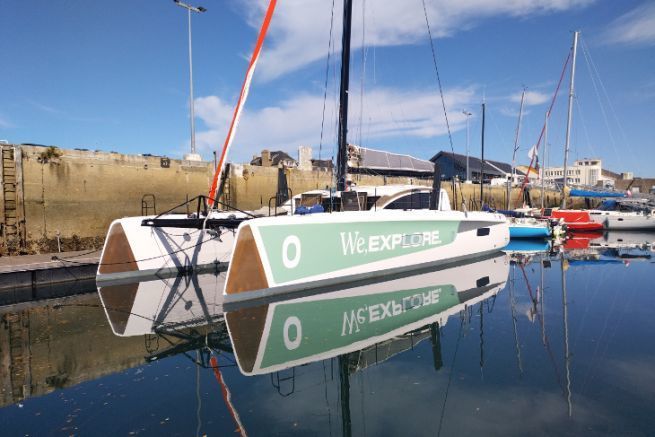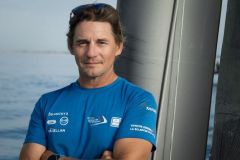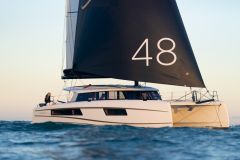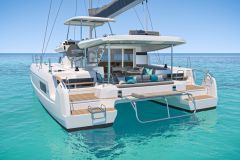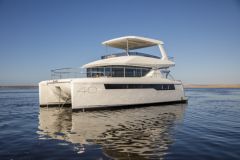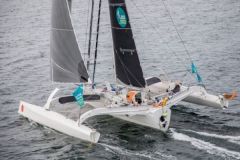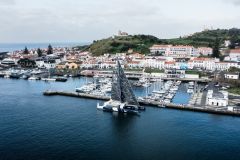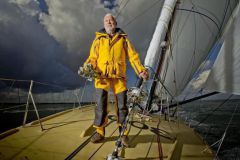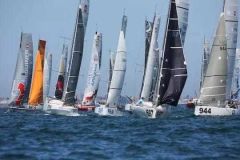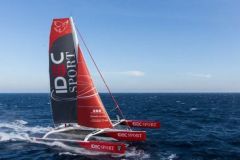Roland Jourdain wanted to make its participation in the Route du Rhum 2022 a manifesto for changes in the construction and use of sailboats . For that, he decided to leave with a production boat, but with some modifications... Here are the modifications.
Flax, from the deck to the masthead
When we think of the environmental impact of a boat, we immediately think of its materials. Roland Jourdain has been working on this subject for many years. Unlike an Outremer 5X, whose deck is traditionally made of glass sandwich with carbon reinforcements, WeExplore's deck uses flax fiber combined with a bio-sourced resin. Hoods and non-structural parts also favor this material.
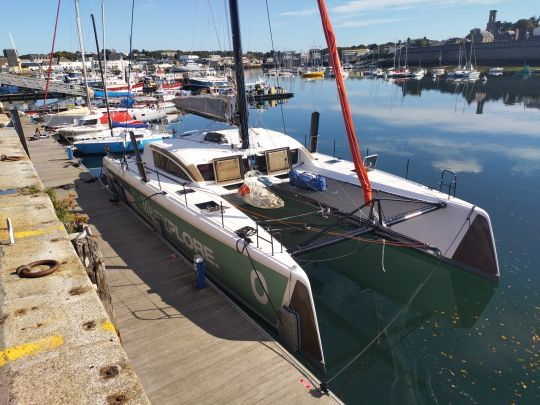
Linen is also used in the mainsail and headsails of the catamaran, made at All Purpose.
A revised deck and sail plan
The other major difference is the organization of maneuvers and rigging.
Gone are the electric winches designed to assist the yachtsman in cruising, with a reduced crew. The boat must be sailed single-handed, by hand. The deck layout has therefore been redesigned to find the most direct route to the cockpit for each sheet and halyard, and thus limit friction. Gearboxes have been added. The winches are grouped around two coffee grinder columns.
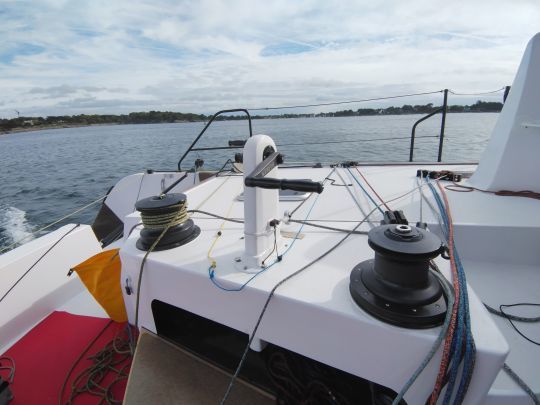
The helm station behind the roof disappears in favor of tiller bars. Visibility being very limited, clever engine control extensions allow to move on the deck during harbor maneuvers.

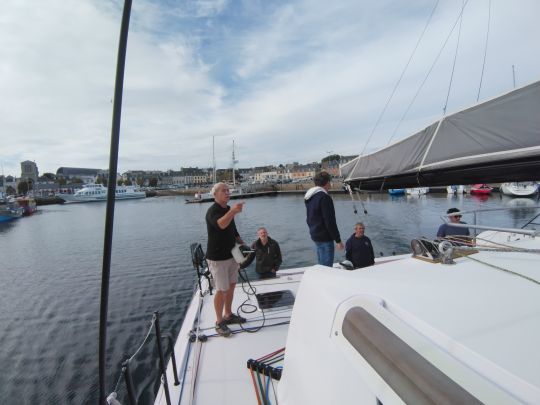
To center the weights, the fuel tanks are installed in the trunks in front of the roof, not under the aft bunks.
The skipper from Finistère chose a fixed mast, identical to that of the production boats. With a lighter boat, he has a few extra square meters of space by moving the halyard points up.
Make room for recycled material
On many of the stations, Roland Jourdain has favored reuse over the purchase of new equipment. The daggerboards are those of a Multi 50. Lighter, longer and asymmetrical, they give a gain in performance, while limiting the use of composite. The winches and coffee grinders are recovered, as are the spinnakers, re-cut from Roland Jourdain's old sails. A coat of paint will be enough to hide old sponsors!
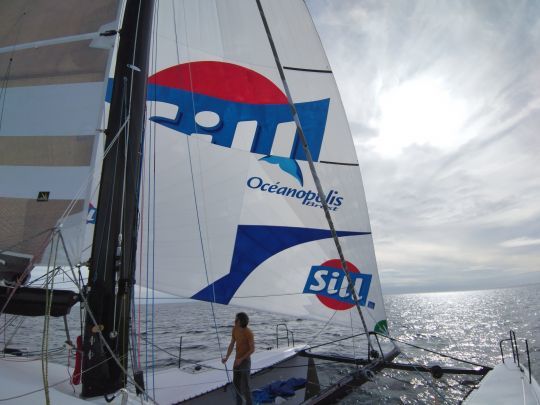


The greatest WC of the Route du Rhum!
Finally, inside, the stripping prevails. The hulls are bare. No useless partitions between cabins. Only a net prevents from falling from the saloon nacelle to the hulls. A chart table and a small kitchen are located in the roof. The gangway on the starboard hull houses the toilets, probably the largest in the entire Route du Rhum fleet!

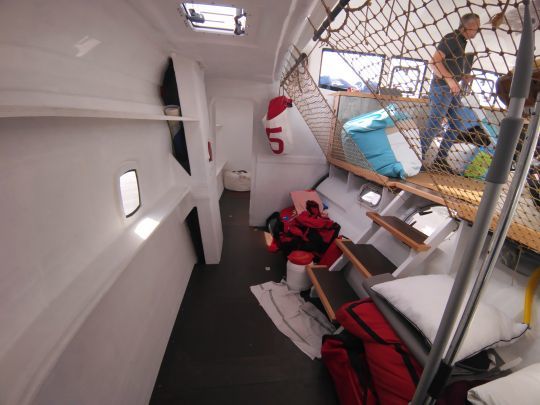
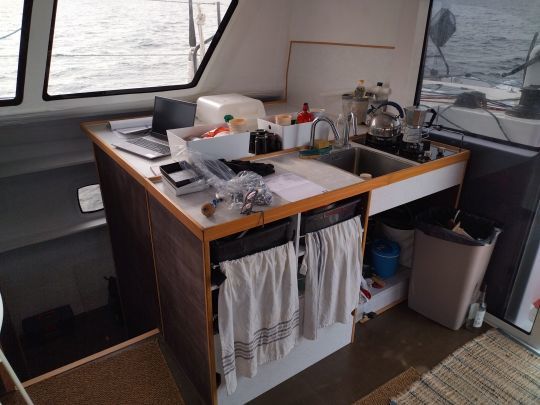
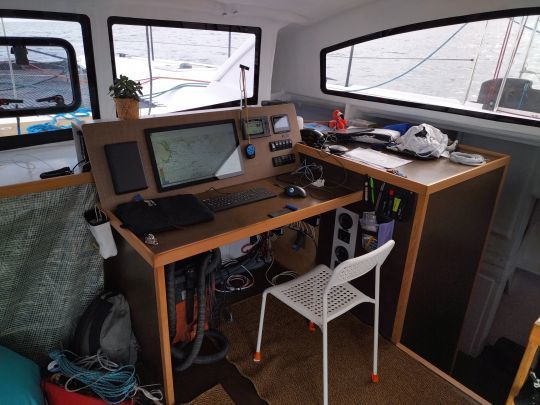
All these differences add up to a 5 ton lighter boat, and the performance differences that go with it! In 18 knots of wind, we were taking out a hull on our trip...
